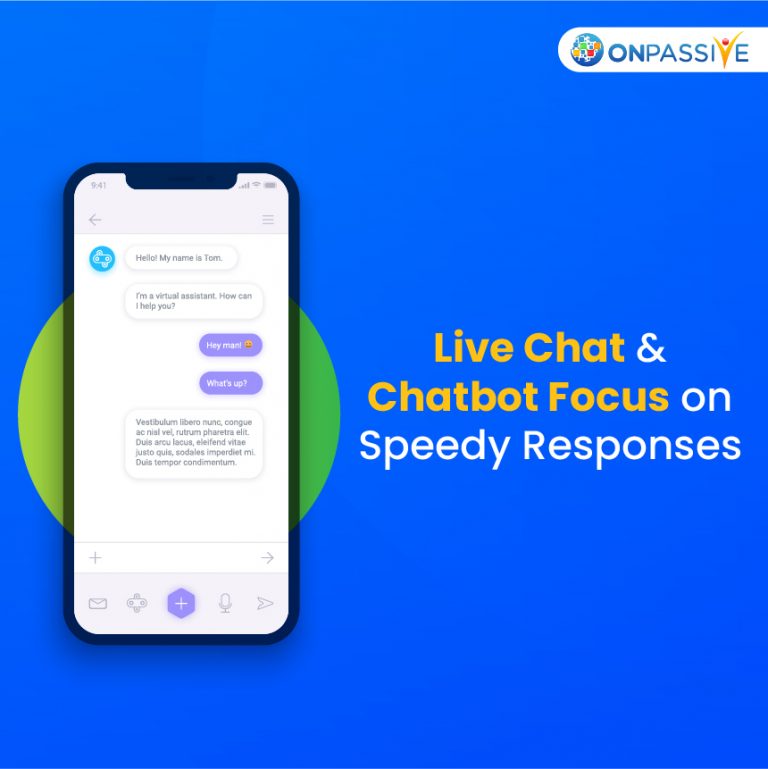
After one poor encounter, 51% of customers never contact a firm again. Every interaction and every lost opportunity with prospective customers, recent purchases, and long-time users becomes more important as a result. This situation justifies the saying, “the first impression is the last impression.”
When it comes to customer service engagements, web chat is frequently the first point of contact. While chat services originally connected customers with live customer care representatives, chatbots have become more popular for understandable reasons and with clear drawbacks.
Now, let’s check out the difference between chatbots vs live chat.
Difference Between Chatbots vs Live Chat
Speedy Responses
Live chat is a terrific tool for offering customers a direct answer when it’s set up and runs properly. A potential client would often ask an introductory question, which will initiate a conversation with a customer support person who is present on the other end. If no one is available, the customer is asked for their email address so that the customer support person can contact them later. For a consumer who requires quick assistance, a delayed answer or no answer at all can be frustrating and potentially create a negative option about the company and its products.
But when we talk about the chatbot, it provides an immediate response. For example, if you ask a question like “where is my order?” you get an automated response saying, “Your order has been shipped or out of delivery”. So, definitely using a chatbot is a wiser choice as no one would like to wait 30 minutes on the phone. It’s a simple approach to please the customer while also providing an immediate response. This allows companies to focus on more productive tasks rather than answering the same queries again and over.
24/7 Support
Companies may have regular hours, but clients don’t. Thus, clients can post their query at any time of day. There’s a good probability that the chat won’t be active if no one is in the office. As a result, a chatbot comes in handy.
Chatbots are available 24/7. According to a report, 83 per cent of online customers require assistance while purchasing online, regardless of the time of day, and they know the customer experience importance in a B2B setting. Wouldn’t it be nice to have a system in place that could answer queries fast regardless of the time?
Understanding Customers
If any site offers live chat, a team member can use context cues to figure out how the consumer is feeling and what they want. Visitors love being able to speak with a live person, but will they be able to recognise the difference in the future as bots become more prevalent? Or, to be honest, will they care?
Chatbots aren’t perfect, especially when it comes to providing personalised service. They do, however, provide fantastic consumer feedback that may be used to understand the clients and their experience better. A chatbot is computer software that has been programmed to respond to a set of queries. Their size and level of intelligence can differ. Some are limited to simple basic exchanges, while others learn and grow, improving future encounters with clients based on previous interactions. Even the world’s most well-known brands use chatbots, demonstrating how useful this intelligent software can be.
The Implementation
The live chat is easy to integrate into the website or through social media platforms like Facebook Messenger. They’re simple to utilise. However, finding someone who can log on all day and answer fast is difficult. Live chats are simple to implement. The tricky aspect is devising a strategy that allows them to continue working.
Conversational marketing has transformed how everyone communicates with customers, with 40% of customers unconcerned about whether a chatbot or a human helps them. If companies plan to make a bot, they’ll need to evaluate how advanced their clients want it. Also, they have to question themselves will bots be able to answer frequently asked questions or engage in actual dialogue with the clients?
- Questions to ask: Live Chat vs Chatbot
- Do you have a problem with customer service response times?
- Do you find yourself wasting time by answering simple, fact-based questions?
- Are you looking for more information about customer service interactions?
- Are you attempting to save money on customer service?
- Do you need to expand your customer support team?
- Is it difficult to have a simple chat with a customer support representative?
Conclusion
Chat, whether live or automated, is becoming more popular. Much of the discussion over live chat vs chatbots revolves around a specific type of user experience. The customer care provided by chatbots cannot be compared to that provided by humans. Thus, companies will fail if your chatbot approach is based on maintaining that deception. Companies who have had success with chatbots understand how to use them, when to switch to live chat, and how to begin planning for the future of customer support, which is yet unknown.


